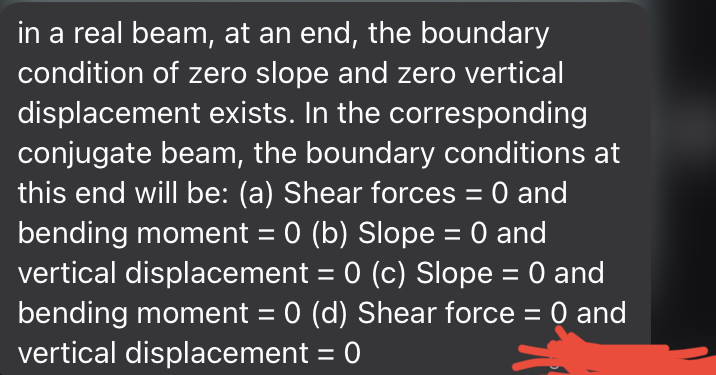
Extracted text: in a real beam, at an end, the boundary condition of zero slope and zero vertical displacement exists. In the corresponding conjugate beam, the boundary conditions at this end will be: (a) Shear forces = 0 and bending moment = 0 (b) Slope = 0 and vertical displacement = 0 (c) Slope = 0 and bending moment = 0 (d) Shear force = 0 and vertical displacement = 0